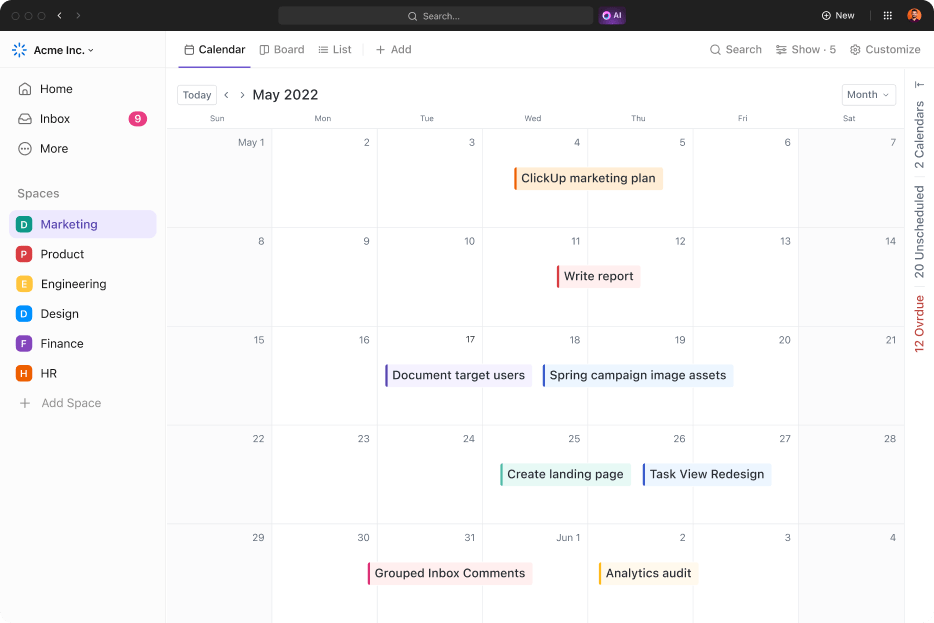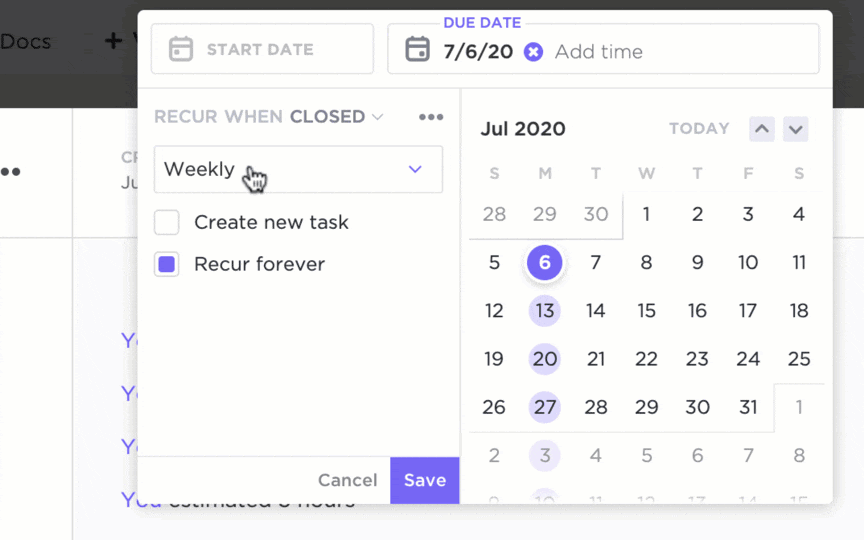Burnout in the Modern Workplace: 60+ Statistics to Explore

Sorry, there were no results found for “”
Sorry, there were no results found for “”
Sorry, there were no results found for “”
Let’s start with a statistic! Around 77% of employees today report experiencing work-related stress in their current roles.
Today, burnout is a pressing reality that affects both mental and physical health across the workforce. As work-life boundaries blur and stress levels rise, productivity takes a significant hit.
However, there’s hope. Leaders can create a healthier work environment by understanding the root causes of workplace burnout and researching effective solutions.
In this blog, we’ll explore over 60 statistics on employee burnout, revealing the true extent of this issue. Use these insights to develop strategies for reshaping your workplace culture and enhancing employee engagement.
Burnout is a state of prolonged physical, mental, and emotional exhaustion that results from overwhelming stress at work. It goes beyond mere fatigue; high levels of burnout leave individuals feeling drained and disconnected from their professional lives.
The World Health Organization (WHO) classifies employee burnout as an occupational phenomenon, not a medical condition. It arises from chronic stress in the workplace that hasn’t been managed effectively, affecting mental and emotional health. 😓
Burnout can be experienced in the following ways:
Ongoing work-related stress leads to employee overload and reduces productivity. These are the starting points for burnout’s ripple effects across organizations. If you or someone you know has faced burnout, it’s essential to recognize its impact on work-life balance.
Here’s how workplace burnout affects everyone:
Identifying and addressing burnout early is essential for workplace health. Leaders need concrete data to grasp the extent of the issue and craft effective strategies to combat burnout.
Explore these 60+ burnout statistics that highlight the prevalence, causes, and effects of workplace burnout across various industries:
Burnout has become a common experience in the modern workplace, affecting many employees across various industries. Here are some stats about the prevalence of burnout in the workplace👩💼
💡Pro Tip: Burnout is a pervasive issue in high-demand tech sectors. Notably, 50% of data scientists and over 40% of DevOps engineers report experiencing stress due to heavy workloads. Here are some strategies for addressing and preventing developer burnout:
Understanding the root causes is essential to crafting effective solutions. As you can see from the chart below, high workloads and people issues are the two leading causes of burnout at work.

Here are key statistics that highlight the main contributors to workplace burnout:
💡Pro Tip: Feeling mentally drained after just a few hours of work? Learn how to fight mental fatigue to boost productivity and enhance focus.
Here are some effective strategies:
Leaders play a pivotal role in increasing or reducing their teams’ burnout.
Here are key burnout stats highlighting the impact of leadership on employee burnout—and the worrying fact that managers are not immune to burnout either:
Burnout’s consequences extend far beyond job performance. It profoundly affects mental and physical health and poses significant risks to organizational profitability and reputation. These stats paint a sobering picture of the impact.
Burnout isn’t only a human issue—it’s bleeding organizations dry. The financial fallout of a high employee burnout rate is costing businesses billions each year 💵
Read More: Employee Engagement Metrics to Track
But there’s hope: investing in well-being and mental health benefits pays off—both for employees and the bottom line. It’s a win-win—supported employees perform better, and businesses thrive.
Higher employee engagement often means lower burnout rates. Understanding this relationship is crucial for fostering a healthy and productive work environment 🌱
Implementing targeted strategies can reduce burnout and its negative impacts. Explore these crucial burnout statistics on what works:
Read More: Embracing Workplace Flexibility
These stats paint a clear picture: employee burnout is a serious issue that needs constant vigilance and proactive measures.
Managing burnout requires action from both organizations and individuals. Companies need strong strategies in place, while individuals should also take steps to prevent and manage burnout.
Let’s examine the dynamics of burnout through a case study of Amir, a medical radiation technologist.
Problem:
Amir, a healthcare professional during the COVID-19 pandemic, faced overwhelming stress due to uncertainty, high job demands, and fear of the virus. This led to severe burnout, leaving him isolated and struggling with his mental and emotional well-being.
Intervention:
Recognizing the signs of burnout, Amir’s manager took immediate action by:
Outcome:
As a result of these interventions, Amir felt much-needed emotional relief. The support systems helped him reconnect with colleagues, building a sense of teamwork that had been lost. He also learned better ways to handle stress.
Let’s look at how both employers and employees can work toward managing burnout:
Organizations can leverage technology to enhance employee performance and well-being.
In fact, nearly half of global managers believe that intelligent use of AI and tech tools can significantly improve efficiency without increasing stress.
This is where ClickUp comes in—an AI-driven project management software designed to streamline tasks without overwhelming employees.
Here’s how ClickUp supports workload balance, enhances transparency, and helps teams remain productive:

When everything feels like a priority, it’s easy for teams to feel overwhelmed. Without a clear sense of what’s urgent, deadlines get missed, and burnout creeps in.
Enter ClickUp’s Task Priorities—your perfect ally for flagging tasks by importance: urgent, high, normal, or low.
With 15+ customizable views, ClickUp streamlines team collaboration and workload management. This blend of structured task management and prioritization tools helps reduce stress, promote focus, and maintain productivity.

💡 Pro Tip: Feeling overwhelmed by work tasks, personal responsibilities, and endless to-do lists? Optimize your day and stay organized with ready-to-use task list templates. This way, you can streamline your priorities, manage your time effectively, and maintain focus on what matters most! ⏳✨
Routine, repetitive tasks are often a hidden source of energy depletion and mental fatigue, contributing to burnout.

So, instead of getting bogged down with repetitions, use ClickUp Automations to lighten the load. Automate routine processes—task updates, deadline shifts, and notifications—so your team can focus on high-impact work.
It will help you:

Burnout often stems from poor time management and heavy work commitments. ClickUp’s Time Tracking feature offers real-time insights into task durations, allowing teams to optimize schedules and prevent burnout.
Additionally, with ClickUp Reminders, you can keep projects moving by notifying employees of key deadlines and milestones. With precise data, you can set realistic goals, track progress, and balance workloads.
Unclear workloads and project progress create anxiety, misalignment, and poor decisions—key drivers of burnout. ClickUp Dashboards provide the transparency teams need to stay organized and make informed decisions.

Here’s how you can use Dashboards in ClickUp to prevent employee burnout:
Need a hands-on solution for balancing team workloads? ClickUp’s Employee Workload Template simplifies this process by allowing managers to allocate tasks based on team capacity. With visual insights into workload distribution, you can reduce employee burnout while ensuring even work assignments.
Here’s why you’ll love this template:
💡Pro Tip: If you or your team members have experienced burnout, improving collaboration is essential for recovery!
Use ClickUp’s tools to enhance communication:
Whether remote or in-office, these features help combat isolation and reduce stress, minimizing the need for mental health days.
While organizational support is crucial, individuals are vital in managing their well-being.
Here are some effective self-care practices to mitigate burnout symptoms:
Recognizing the signs of burnout and implementing effective strategies to combat it is essential for maintaining a healthy work environment.
To achieve this, organizations need to create a supportive culture, encourage open communication, and prioritize employee well-being.
Additionally, investing in tools that streamline processes and balance workloads can significantly alleviate stress and improve overall productivity.
This is where ClickUp comes into play. As an all-in-one productivity tool, it streamlines task management, automates repetitive processes, and enhances collaboration.
With advanced features and customizable templates, it empowers teams to adapt workflows to their specific needs, ensuring that tasks are prioritized effectively.
Ready to conquer burnout? Sign up on ClickUp and transform your workflow today!
© 2025 ClickUp